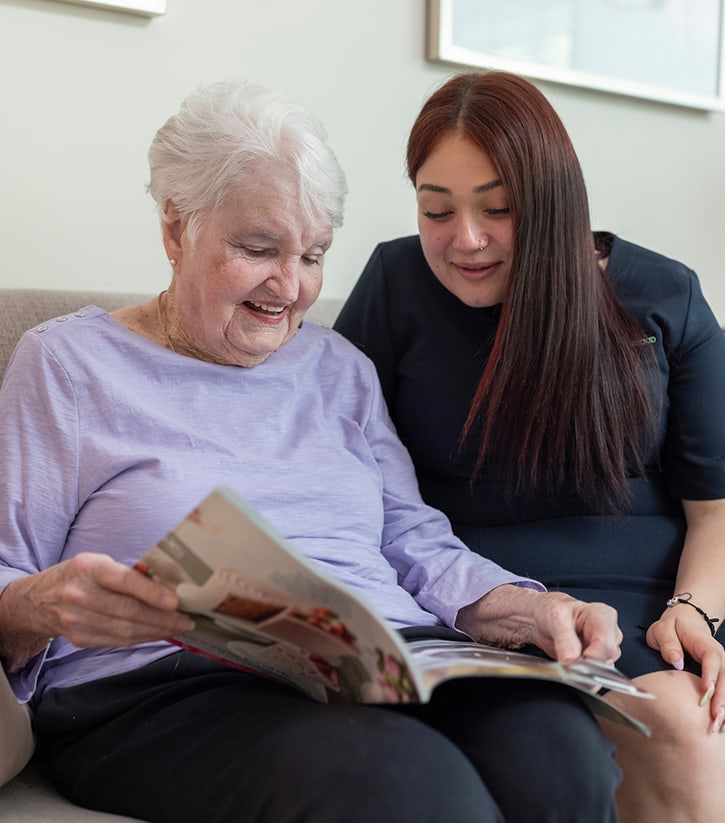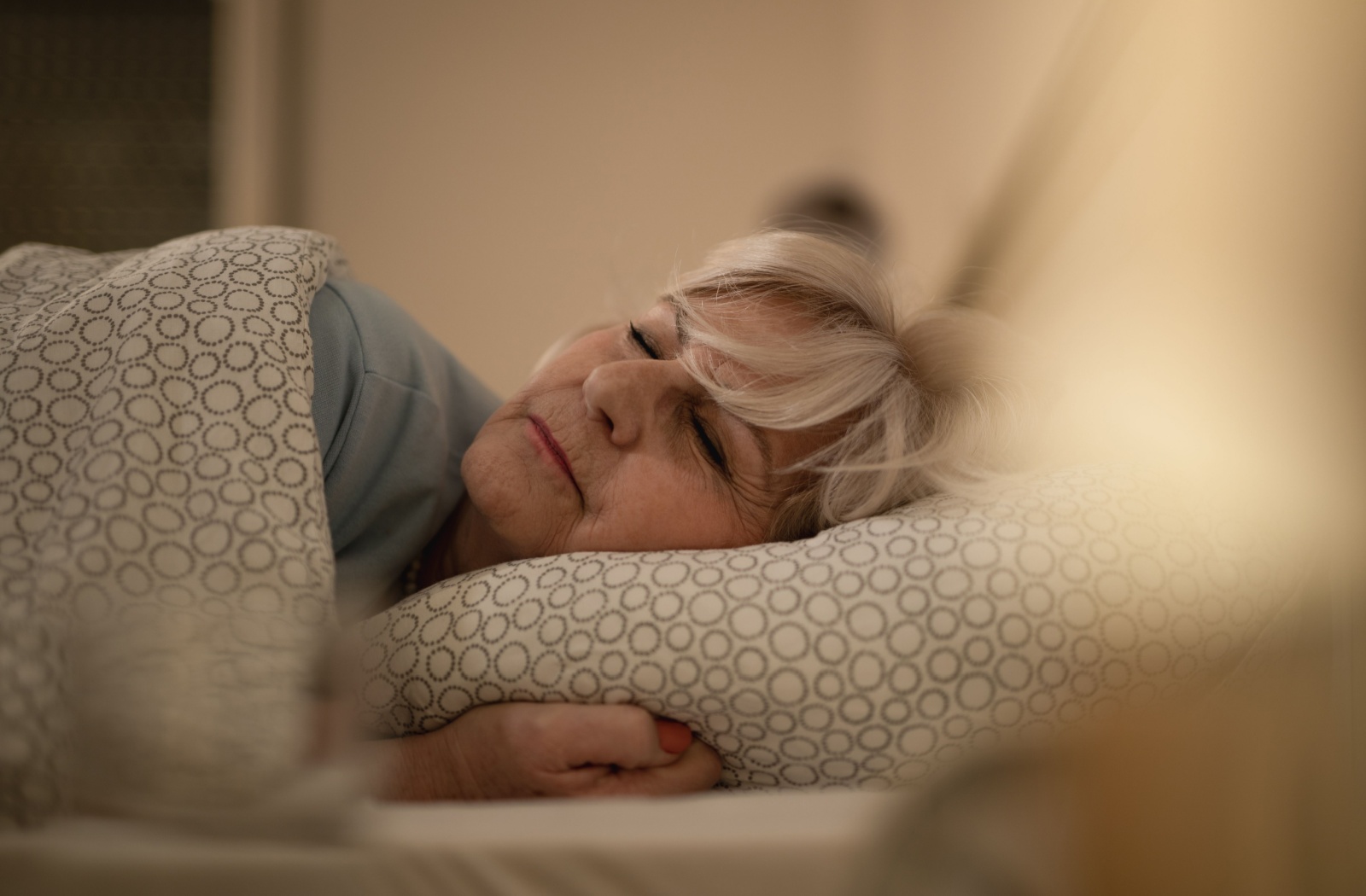Key Takeaways
- Most older adults sleep best between 65–68°F, a slightly warmer range than younger adults typically need.
- Age-related changes in metabolism and circulation can make temperature regulation more difficult at night.
- Discomfort from being too warm or too cool can interrupt sleep and affect morning energy.
- Common signs of temperature-related sleep issues include restlessness, overheating, and waking up chilled.
- Small changes—such as adjusting the thermostat, choosing breathable bedding, and improving airflow—can help create a more comfortable sleep environment.
- A steady sleep temperature supports deeper rest, better morning comfort, and overall wellness.
What’s the Best Sleeping Temperature for Older Adults?
Getting quality sleep becomes more important as you age. However, temperature plays a bigger role than many people realize. Finding a sleep environment that feels just right can help you relax more easily, rest more deeply, and start each morning with a bit more comfort and clarity. That’s the key to living a healthy and supportive lifestyle.
The ideal sleeping temperature for most older adults is between 65°F–68°F, which is slightly warmer than the recommended range for younger adults. This small shift supports the natural changes your body experiences with age.
Why Temperature Matters More as You Age
A good night’s sleep begins with feeling physically at ease. As your body winds down, your internal temperature naturally drops, sending signals that it’s time to rest. When your sleep environment matches what your body needs, it’s easier to fall asleep and stay asleep.
For many older adults, slight temperature shifts can make a noticeable difference, as your body’s temperature regulation system changes over time. As metabolism slows, your body produces less heat at night. Circulation can also shift with age, and this makes it harder to warm up or cool down as quickly as you used to.
The Ideal Sleep Temperature Range for Older Adults
When your temperature feels “off,” restful sleep becomes harder to maintain. These disruptions can affect your energy and comfort the following day, which is why sleep temperature becomes an important part of overall wellness.
While 65-68°F works well for most older adults, your perfect temperature might be slightly different. Some people naturally run warmer or cooler, and that’s completely normal. Even seasonal changes can make a big difference here. Listen to your body and adjust accordingly.
Signs Your Sleep Temperature Isn’t Right
Finding the right temperature often takes a little trial and error. So, it helps to learn the signs that your sleep temperature isn’t right. Look for problems such as:
- Restless sleep or waking up multiple times
- Feeling sweaty or overheated
- Kicking off blankets during the night
- Waking up stiff or chilled
- Curling tightly under your covers
- Feeling tired despite getting enough hours of sleep
If these sound familiar, it’s time to make some changes. A few minor adjustments to your sleep environment can help you settle into a temperature that feels more natural for your body.
Simple Ways to Create Your Perfect Sleep Environment
Small changes can help you control your sleep environment without making major adjustments to your routine. These habits can support a steadier temperature throughout the night.
Adjusting Your Thermostat
Lower or raise your thermostat by just one or two degrees at a time until you find the temperature that feels best. Many people prefer setting their thermostat to adjust automatically during the night to help maintain consistent comfort.
Choosing the Right Bedding
Natural fabrics like cotton and linen breathe better than synthetic materials. These fabrics help moisture move away from your skin, keeping you more comfortable throughout the night. Layer your bedding so you can easily add or remove coverage as needed. A lightweight sheet with a medium-weight blanket gives you flexibility without getting too warm or cold.

Managing Light and Airflow
A small fan can help circulate air without lowering the temperature too dramatically. Closing blinds or heavy curtains during the day keeps excess heat out, while opening them slightly overnight can create gentle airflow. A balanced environment supports steadier overnight comfort.
Setting Up a Calming Night Routine
Light evening habits can help your body wind down more naturally. Soft lighting, quiet activities, and avoiding late-evening screen time can all support a cooler, more restful sleep environment. Even small adjustments—like dimming lights earlier—can help ease you toward bedtime.
The Health Benefits of Getting Your Sleep Temperature Right
Finding a sleep temperature that feels comfortable for your body can make a noticeable difference in how you rest. When your bedroom is set to a range that supports deeper sleep, your body has an easier time repairing, restoring, and preparing for the day ahead. A proper sleep environment offers benefits such as:
- Helps you reach deeper, more restorative sleep stages
- Supports smoother breathing and easier relaxation at bedtime
- Reduces nighttime awakenings caused by overheating or chills
- Promotes steadier morning energy and comfort
- Contributes to better mood and mental clarity throughout the day
- Supports immune function by helping your body rest effectively
- Encourages more consistent sleep patterns over time
A comfortable sleep temperature works hand in hand with your overall wellness. This helps you wake up feeling more at ease and ready for the day.
A Comfortable, More Supportive Life Is Within Reach
At The Hidenwood by RUI, we understand that good sleep is the foundation of healthy, active living. Our comfortable living spaces and wellness programs are designed to support every aspect of your well-being, including quality rest. With the right temperature and a space designed around comfort, restful nights become much easier to enjoy. That’s what you deserve.
Ready to learn more about how we can help you live your most comfortable life? We’d love to show you around and discuss how our community supports better sleep and overall wellness. Schedule a tour with us today, and let us welcome you to your new home.













